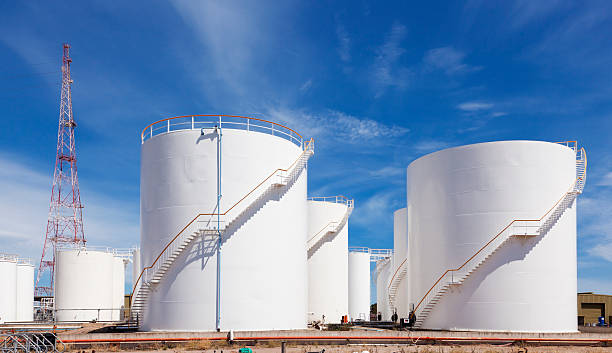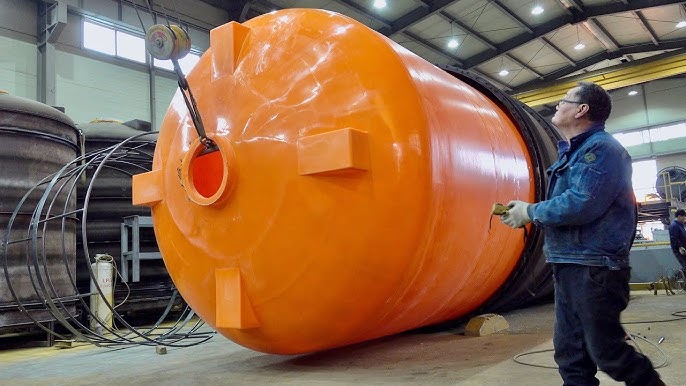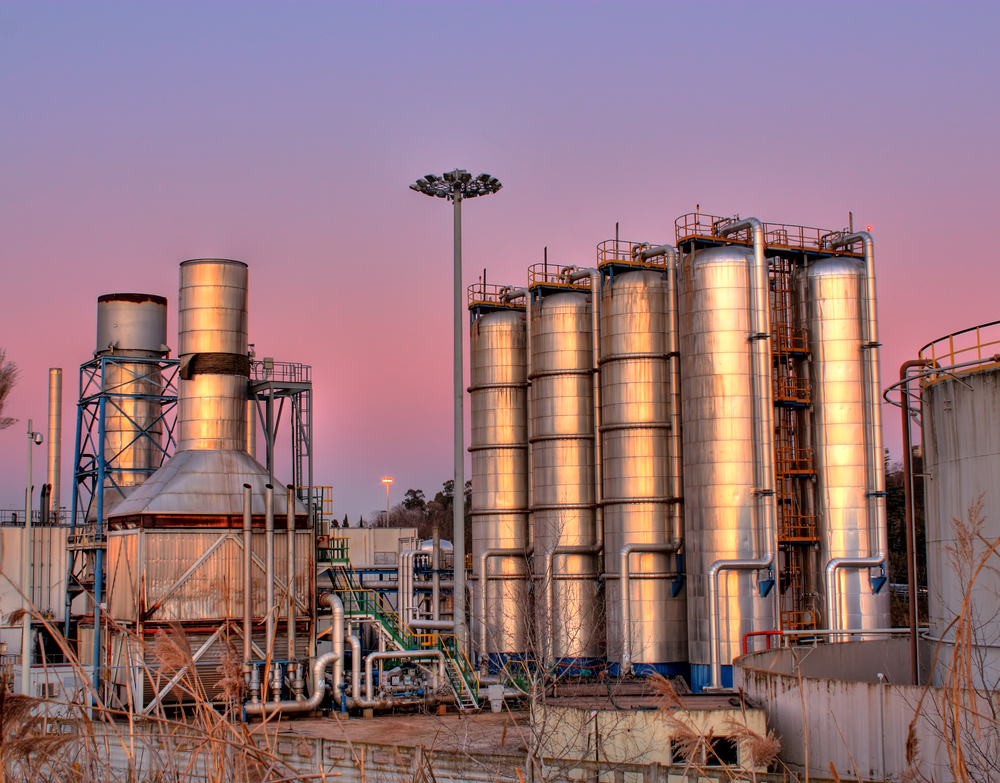Storage Tank Manufacturing: thermal advancements cut energy costs
Leading Technologies in Storage Tank Manufacturing: Enhancing Performance and Sustainability
The landscape of storage tank manufacturing is undertaking substantial transformation as market leaders increasingly take on advancements targeted at enhancing both efficiency and sustainability. Trick developments, consisting of the usage of sophisticated materials and clever technologies, are redefining operational requirements while attending to environmental problems. In addition, modular container styles and environmentally friendly manufacturing processes existing new opportunities for resource optimization. As these fads remain to progress, the effects for sector techniques and long-term sustainability goals value even more expedition. What certain developments are establishing the phase for this paradigm shift?
Advanced Materials for Resilience
The development of storage tank manufacturing is significantly driven by the combination of innovative products created to improve durability and efficiency. Traditionally, tank were created mainly from carbon steel, which, while efficient, is vulnerable to deterioration and structural degradation over time. Texas Oil & Gas Storage Tank Fabrication Authority. Recent advancements have actually seen the intro of high-performance alloys, composite materials, and polymers that provide superior resistance to environmental elements and chemical direct exposure
For example, stainless-steel and duplex alloys are now typical in applications requiring increased rust resistance, particularly in aquatic or chemical storage space environments. Composite products, such as fiberglass-reinforced plastics, supply an exceptional strength-to-weight proportion while lessening upkeep costs due to their non-corrosive nature. These technologies not only expand the life-span of storage space containers but likewise improve their operational efficiency.
Additionally, the adoption of nanotechnology in finishings is showing valuable in more boosting the safety homes of storage tank surfaces. These innovations not only reduce the frequency of inspections and repair services yet also contribute to sustainability by lessening source usage and waste. As the sector remains to introduce, the concentrate on sophisticated materials will certainly continue to be a cornerstone of storage tank manufacturing, making sure safety and dependability in requiring applications.
Smart Checking Technologies
Innovations in wise surveillance innovations are transforming the administration and upkeep of tank (Texas Oil & Gas Storage Tank Fabrication Authority). These innovations take advantage of the Net of Things (IoT), artificial intelligence (AI), and progressed sensing unit innovations to enhance operational efficiency and safety. By integrating real-time information collection, operators can monitor tank conditions, such as temperature level, stress, and fluid degrees, with extraordinary precision
Smart tracking systems make it possible for anticipating upkeep, enabling timely interventions prior to potential failures occur. This lessens downtime and decreases maintenance prices, as operators can address issues based on data-driven insights rather than reactive actions. Furthermore, these modern technologies enhance safety and security procedures by supplying signals for leaks, overfills, or architectural weaknesses, considerably alleviating ecological dangers.
Moreover, cloud-based systems facilitate centralized surveillance across numerous locations, enabling drivers to make enlightened decisions quickly. Improved information analytics likewise add to optimizing supply monitoring, making sure that resources are made use of efficiently.
As governing requirements for environmental conformity become increasingly rigorous, smart tracking technologies play a crucial role in ensuring storage space tanks meet these requirements. In general, the fostering of these innovations not just enhances functional effectiveness however likewise promotes sustainability in storage tank manufacturing and management.
Modular Tank Designs
Modular container styles are changing the storage tank industry by providing improved customization choices that accommodate particular client demands. These layouts not only help with customized services but additionally give space-saving setups, making them suitable for varied environments. As industries seek performance and versatility, modular storage tanks offer a compelling option to typical storage space remedies.
Boosted Customization Options
As manufacturers strive to satisfy diverse customer demands, boosted modification choices in storage tank layout have actually come to be progressively widespread. Modular container styles exemplify this fad, permitting for tailored setups that suit various functional demands. By using modular elements, suppliers can create storage tanks of various dimensions, shapes, and functionalities, making sure compatibility with specific applications.
These customizable containers can be adapted to hold various sorts of liquids, including hazardous products, without endangering safety or performance. In addition, modular designs assist in scalability, enabling companies to increase their storage capability seamlessly as demand expands. This adaptability not only maximizes area utilization but additionally reduces the overall lifecycle expenses related to container installment and maintenance.
Furthermore, enhanced modification alternatives extend to advanced attributes such as integrated surveillance systems, insulation, and specialized layers that boost sturdiness and performance. By supplying a variety of choices, makers equip clients to select styles that align with their functional objectives and sustainability campaigns.
Ultimately, the rise of enhanced personalization options in storage tank manufacturing highlights a commitment to advancement, enabling industries to react efficiently to advancing market demands while enhancing total efficiency and ecological stewardship. (Texas Oil & Gas Storage Tank Fabrication Authority)
Space-Saving Arrangements
Making best use of space performance has become a vital consideration in storage tank layout, specifically with the arrival of modular storage tank configurations. These cutting-edge designs permit the setting up of storage tanks in numerous arrangements, offering versatility and adaptability in space-constrained settings. Modular containers can be conveniently transferred and installed, making them suitable for sectors calling for on-site storage solutions.
Using modular designs not just enhances space but likewise boosts scalability. Organizations can begin with a smaller sized unit and expand their storage capacity by adding added modules as need boosts. This step-by-step strategy allows and decreases ahead of time expenses for far better resource management. Additionally, modular storage tanks can be customized pertaining to configuration, dimension, and product, dealing with particular operational needs.
Sustainability is additionally an essential advantage of modular container arrangements. By making use of standard parts, producers can decrease waste throughout production and enhance the supply chain. Furthermore, these storage tanks frequently feature improved insulation and energy-efficient layouts, resulting in lower operational prices.
Eco-Friendly Manufacturing Processes
As the need for eco liable manufacturing grows, the storage tank market is embracing green procedures to enhance sustainability. This consists of the choice of lasting products, the implementation of energy-efficient manufacturing strategies, and the fostering of waste reduction methods. By focusing on these techniques, manufacturers can markedly reduce their environmental effect while keeping item high quality and efficiency.
Lasting Material Option
Sustainable material option is a foundation of eco-friendly manufacturing processes in the storage tank market. The selection of materials profoundly impacts not just the ecological impact of production but additionally the long life and performance of the tanks themselves. Utilizing recycled or sustainably sourced products, such as high-strength alloys and advanced compounds, decreases the demand for virgin resources and reduces waste.
The assimilation of products with reduced personified energy contributes to a reduction in greenhouse gas exhausts throughout the manufacturing lifecycle. For example, bio-based polymers and safe finishes are obtaining traction, providing both longevity and ecological advantages. These materials not only fulfill the rigorous requirements for safety and security and performance yet additionally improve the containers' resistance to corrosion, extending their life span and reducing maintenance costs.
Producers are progressively adopting life cycle evaluation (LCA) methodologies to assess the environmental effect of material selections. By prioritizing products that are biodegradable or recyclable, the storage tank industry is taking significant strides towards a round economic situation. This dedication to sustainable product option not just lines up with regulative standards but also meets the expanding demand from eco aware consumers and companies alike.
Energy-Efficient Production Methods
In the mission for reducing environmental influence, energy-efficient production techniques have actually become crucial components in the storage tank making industry - Storage Tank Manufacturing. These methods not only lessen energy consumption but additionally boost operational performance and reduced general manufacturing prices
One significant strategy is the adoption of advanced manufacturing technologies, such as computer system numerical control (CNC) makers, which enhance accuracy and decrease waste throughout the fabrication procedure. Automation and robotics have actually additionally gotten importance, enabling streamlined operations that require less power and workforce. Moreover, the combination of sustainable energy resources, like solar and wind power, into making plants has actually ended up being increasingly typical, making it possible for business to minimize their dependence on nonrenewable fuel sources.
Furthermore, applying power monitoring systems assists optimize and keep an eye on power usage throughout the production cycle, recognizing locations for renovation and guaranteeing conformity with environmental standards. These systems can lead to significant reductions in power usage, contributing to an extra lasting manufacturing process.
Waste Reduction Strategies
The implementation of energy-efficient production strategies naturally leads to an increased concentrate on waste decrease techniques in storage tank manufacturing. Companies are increasingly adopting practices that lessen material waste while maximizing resource usage. Secret approaches consist of lean manufacturing principles, which streamline procedures to eliminate inadequacies and reduce excess stock.
Recycling and recycling products is one more necessary strategy. Many manufacturers are now buying modern technologies that help with the recovery of scrap steel and various other spin-offs during manufacturing. This not only preserves raw materials but additionally reduces disposal costs and environmental influence.
In addition, producers are accepting electronic technologies such as IoT and information analytics to keep track of and handle waste a lot more properly. These tools can determine waste generation factors and supply understandings for constant renovation. Additionally, executing closed-loop systems enables companies to utilize waste products as inputs for new processes, cultivating a round economic climate.
The search of accreditations such as ISO 14001 underscores the dedication to sustainability and waste decrease, placing firms positively in an affordable market. By methodically attending to waste, storage tank makers can attain both financial and environmental benefits, driving forward a much more lasting sector.
Energy-Efficient Insulation Solutions
As suppliers seek to boost the efficiency of storage tanks, they are turning to cutting-edge energy-efficient insulation services that significantly decrease thermal losses. One noticeable trend is the usage of innovative materials such as aerogels and vacuum-insulated panels, which offer outstanding thermal resistance while being light-weight. These products not just minimize warmth transfer however additionally contribute to a minimized general footprint and reduced setup prices.

Executing these energy-efficient insulation options not only brings about substantial energy cost savings but likewise aligns with sustainability goals by minimizing greenhouse gas emissions connected with home heating and cooling down procedures. As the industry evolves, the concentrate on insulation technology will certainly remain critical in making certain that storage space containers satisfy modern-day efficiency requirements while contributing positively to environmental sustainability.


Automation in Tank Production
Developments in automation innovation are reinventing container production, substantially boosting effectiveness and precision. Automated systems now play an important duty in different phases of manufacturing, from product handling to welding and setting up. These innovations lessen human intervention, therefore decreasing the possibility of mistakes and enhancing throughput.
Robotic systems are progressively made use of for tasks such as welding and surface therapy, ensuring constant high quality and decreasing production time. Automated quality control systems use sophisticated sensors and artificial intelligence algorithms to detect defects in genuine time, allowing manufacturers to deal with problems quickly and preserve high standards.
Furthermore, the assimilation of Internet of Things (IoT) technology in storage tank manufacturing promotes real-time monitoring of equipment and processes. This connection causes boosted functional insights, enabling manufacturers to optimize process and maintenance timetables. Predictive analytics can anticipate equipment failures, further boosting dependability and lessening downtime.
Improved Safety Functions
Integrating enhanced safety and security functions into storage tank manufacturing has actually become a crucial focus for industry leaders. As the demand for secure and reputable storage services grows, producers are taking on cutting-edge innovations and style principles to alleviate threats linked with unsafe materials.
One noteworthy development is the unification of innovative leak detection systems. These systems use sensors that check tank stability, enabling very early identification of leakages and avoiding ecological contamination. Additionally, making use of double-walled containers adds an additional layer of defense, ensuring that if the internal wall stops working, the outer wall consists of any kind of potential spills.
Furthermore, manufacturers are implementing pressure safety valve and overfill avoidance systems to deal with prospective overpressurization and overflow situations. These systems are made to activate immediately, substantially reducing the risk of devastating failures.
The integration of clever surveillance innovations enables for real-time information collection and evaluation. This ability makes it possible for proactive upkeep and quick feedback to any kind of safety worries, guaranteeing conformity with market laws.
Frequently Asked Inquiries
Exactly How Do Storage Tank Innovations Effect Overall Operational Prices?
Advancements in storage tank manufacturing substantially decrease functional costs by enhancing effectiveness, minimizing maintenance requirements, and enhancing resource usage. These improvements cause lower power usage and extended equipment life expectancy, inevitably boosting total monetary efficiency for companies.

What Industries Benefit A Lot Of From Advanced Storage Tank Technologies?
Industries such as oil and gas, chemicals, water therapy, and food processing greatly profit from advanced storage tank technologies. These technologies boost safety and security, optimize resource management, and improve functional performance, inevitably lowering costs and environmental impact.
Exist Particular Accreditations for Eco-Friendly Storage Containers?
Yes, details accreditations for environmentally friendly storage containers exist, such as the Eco-friendly Structure Council's LEED qualification, ISO 14001 for ecological management, and numerous industry-specific criteria that assure compliance with sustainability and security guidelines.
What Is the Lifespan of Modern Tank Contrasted to Conventional Ones?
Modern storage tanks typically have a life-span of 30 to 50 years, considerably exceeding standard storage tanks, which commonly last 15 to three decades. Advanced materials and manufacturing methods add to this increased longevity and durability.
Exactly how Do These Technologies Affect Regulatory Compliance in Tank Manufacturing?
Developments in tank manufacturing improve regulatory compliance by incorporating innovative materials, automated surveillance systems, and boosted style criteria. These innovations guarantee adherence to security guidelines, reduce environmental impact, and advertise sustainability within the industry.
The evolution of storage tank manufacturing is increasingly driven by the combination of innovative products developed to enhance durability and efficiency. Modular tank designs are revolutionizing the storage tank market by providing boosted customization choices that provide to details client requirements. Taking full advantage of space effectiveness has actually become a vital factor to consider in storage space container layout, particularly with the introduction of modular storage tank setups - Storage Tank Manufacturing. Innovations in storage space container manufacturing substantially reduce operational prices by improving effectiveness, minimizing maintenance needs, and enhancing source use. Modern storage space tanks normally have a life-span of 30 to 50 years, substantially outmatching conventional containers, which usually last 15 to 30 years